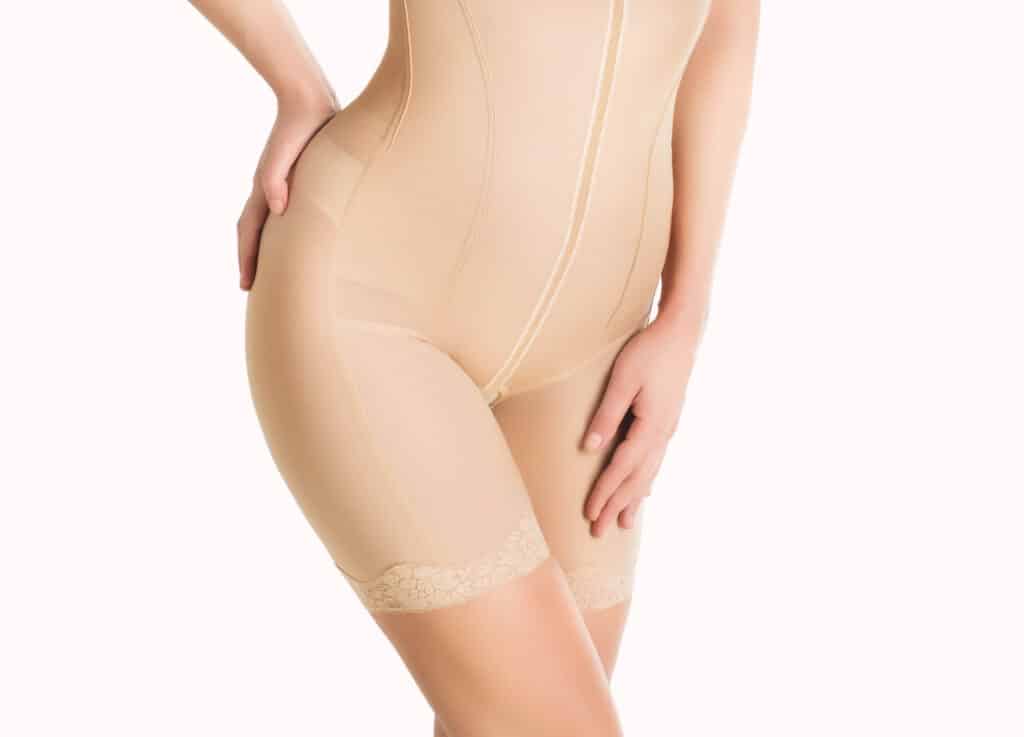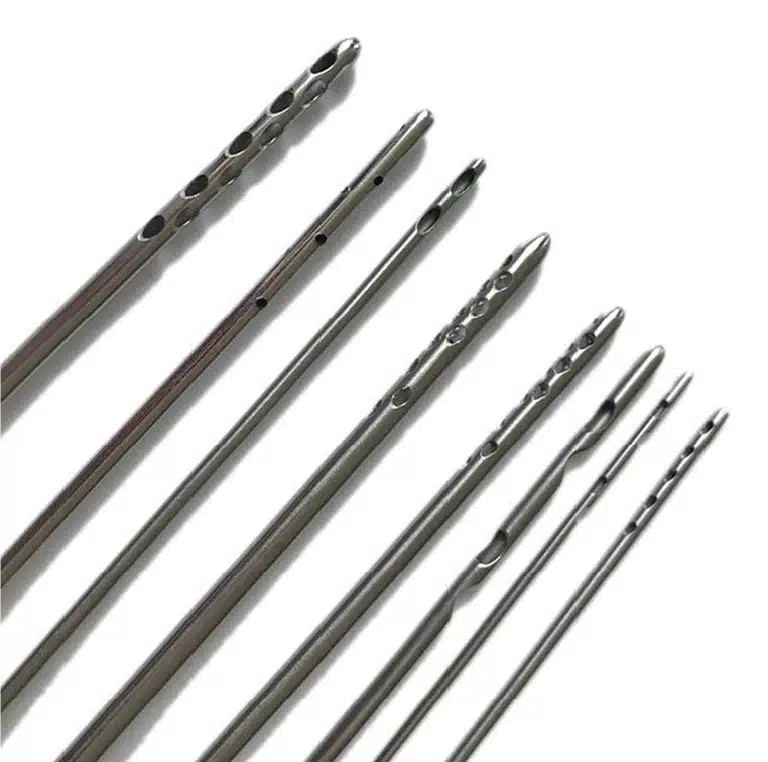Key Takeaways
- Liposuction is not a long-term weight-loss solution. Rather, it is a body contouring procedure that removes fat from targeted areas, which is why it’s so important to know what it can and can’t do.
- Adding physical therapy following liposuction significantly enhances recovery. It reduces swelling, improves mobility, and increases flexibility while minimizing pain and discomfort, making the healing process a whole lot easier.
- Consulting with both plastic surgeons and physical therapists is crucial to develop a customized recovery plan that includes therapeutic exercises tailored to individual needs.
- Regular therapy sessions go a long way toward that recovery. They serve as important tools to track progress and enable course-corrections based on real-world patient experiences and milestone achievements.
- Emotional well-being is every bit as important to recovery. Guided counseling and support from family and friends help alleviate post-operative anxiety and stress, leading to an overall healthier recovery.
- Setting realistic expectations about the recovery timeline and embracing body changes are important for fostering a positive self-image and avoiding overexertion and complications.
Augmenting liposuction with physical therapy enhances recovery and outcomes. PT helps facilitate the healing process, increase range of motion, and strengthen joints in the wake of surgery.
Through our unique model, we place great importance on mental health support, providing patients with the tools they need to adopt a healthier lifestyle post-liposuction. Managing expectations is an important part of a whole-person recovery journey.
Through this holistic approach, mind and body work together, allowing people to pursue and maintain results for the long haul. Celebrating the importance of both physical therapy and mental health makes everyone stronger.
When they approach their surgery with this knowledge, they can be empowered partners in their post-operative experience. This integrated approach holds the potential to restore health, longevity, and improved outcomes.
What Is Liposuction
Liposuction, or suction-assisted lipectomy, otherwise known as liposculpture or lipoplasty, is a surgical procedure. It is a safe and effective procedure to remove excess fat from specific areas of the body. This procedure specifically focuses the treatment around the abdomen, hips, thighs, arms, and neck.
It utilizes a process known as suction to precisely and effectively contour the body, which can lead to a more sculpted and defined look. For those who think liposuction is a weight loss solution, think again. Rather, this procedure carves out your body with precision.
It’s the only procedure that targets those stubborn fat deposits that just won’t budge with diet and exercise.
Define Liposuction
Physical therapy plays an essential part in recovering faster after liposuction. By increasing mobility and flexibility, therapy can speed up healing and get patients back to their everyday lives more quickly.
Adopting this approach can help prevent post-operative discomfort and minimize the risk of complications. Specific exercises and stretches have almost instantaneous results on relieving stiffness and increasing blood flow, which is a big step towards better overall health and wellness.
Procedure Overview
- Consultation Steps: Engage with both plastic surgeons and physical therapists to gain a comprehensive understanding of the procedure and recovery.
- Customized Plan: Develop a tailored therapeutic exercise plan based on individual needs, ensuring a personalized recovery journey.
- Regular Sessions: Hold regular therapy appointments to keep progress and follow typical recovery protocols.
- Monitoring: Continuously assess progress, adjusting therapy strategies according to patient feedback and recovery milestones.
Common Misconceptions
We know that emotional well-being post-surgery plays a huge role in recovery. Counseling provides important coping mechanisms to manage post-operative anxiety and stress while also maintaining mental health during this transition period.
Building a support system, involving family, friends, and healthcare professionals, contributes to holistic recovery, addressing both physical and emotional aspects.
Why Integrate Physical Therapy
Understanding the recovery timeline after liposuction involves recognizing key phases of healing. Here’s a rundown of what to expect:
- Initial Healing (1-2 weeks): Swelling and bruising are expected. Once the incisions heal, physical therapy can help restore range of motion and improve circulation.
- Intermediate Phase (3-6 weeks): The next thing that happens is inflammation goes down. Physical therapy plays a major role in restoring mobility and flexibility.
- Long-term Recovery (6+ weeks): Tissue repair continues. PT emphasizes strength and endurance as well.
Acknowledging these limitations during both the project initiation and scoping phases is important. Keeping stress off healing tissue reduces the chance of injury.

PT leads you towards correct and safe movement patterns that don’t push you too far and can even develop complications such as scarring fibrosis. Accepting your body’s changes through recovery helps you develop a healthy and positive self-image.
It’s a difficult journey of transformation, and physical therapy helps with a greater awareness of one’s own body and increasing confidence.
Enhance Recovery Speed
We know that balanced nutrition helps with recovery. A variety of colorful, nutrient-rich foods set the stage for optimal tissue repair and immune function.
Creating a life-long exercise plan after surgery fosters a step-by-step approach to increased activity, improving blood flow and muscle definition. Mindfulness and relaxation techniques help to cope with stress, improving one’s overall health and recovery.
Physical therapy combines all three, providing a complete approach to healing.
Improve Mobility and Flexibility
We know early intervention with physical therapy works very well. It also maximizes your quick return to normal activities, so that’s why 93% of plastic surgeons would recommend it.
Physical therapy prevents and reverses loss of mobility and flexibility for better functional outcomes and minimized scarring. It is critical to the avoidance of complications, promotion of optimal healing, and the overall improvement of surgical outcomes.
Minimize Post-Operative Discomfort
PT addresses pain and discomfort, so you can get back to your regular life faster. Through specific exercises and sophisticated techniques, it helps you recover quicker and more efficiently.
However, even though 13% of surgeons still underestimate its importance, physical therapy should be a surgeon’s best friend when it comes to ensuring optimal post-surgical results.
Steps to Combine Liposuction and Therapy
Consult with Professionals
First, understand that it’s key to get advice from a cosmetic surgeon and a physical therapist. We want to make sure you’re aware of the benefits of liposuction plus physical therapy. As you start to speak with the experts, you’ll begin to understand how the two processes can be combined.
Consider that patients statistically get back to their daily activities sooner when they do the procedures together. Address any concerns you may have, such as contour irregularities being the most common postoperative complication with an incidence of 2.7%. By working with experienced professionals, you lay the groundwork for a smooth, successful process ahead.
Develop a Customized Plan
Now that you’ve gotten advice from the experts, it’s time to create a plan that’s tailored to the needs of your community. This plan must be specific to your unique goals and lifestyle.
It will also feature specific guidance on how to best incorporate post-liposuction physical therapy into a patient’s care regimen. For example, the plan could recommend not doing high-impact exercise for at least six weeks after surgery. A customized care strategy syncs your rehabilitation and physiotherapy appointments seamlessly.
This culture increases your happiness and reduces the negative impact on your everyday life.
Schedule Regular Therapy Sessions
Once your plan is set, keeping a consistent routine of therapy sessions should be the next step. These sessions will set you up to recover clean and fast.
Consistent therapy reduces recovery time by up to 50%. The majority of patients are able to resume normal activities in one to two weeks. Most women are able to return to light activity in this period.
This formalized methodology also helps to maintain steady progress and contributes to a high level of satisfaction with the outcome.
Monitor Progress and Adjust
Monitoring progress is not a one-time process. Routine follow-up appointments with your healthcare provider ensure you’re monitoring how you’re doing.
If necessary, they can modify your plan to be more in line with the pace you’re progressing. This is a big, important step. It’s a promise that you’re taking steps in the right direction and you’re achieving notable steps in your overall recovery.
We can modify your therapeutic exercises or shift your schedule. These changes will serve your healing journey and help you achieve the best results possible.
Mental Health Support Importance
Emotional Well-being Post-Surgery
Once someone has had liposuction, emotional health plays a big role in the healing process. The majority of people report an improvement in their body image, with just under 80% saying they feel more positive about their appearance as a result. That boost in self-assurance usually leads to trying other interests and pursuits that once seemed too intimidating.
These kinds of changes inspire a deeper sense of agency and a more meaningful life. Providers can make the journey to quitting easier by designing tailored approaches to support their quit. A 2020 study illustrated the impact of mental health support on recovery processes.
This method has been proven to increase recovery rates dramatically and illustrates the value of a comprehensive, integrated approach to post-surgical care.
Counseling Benefits
Counseling serves a key role in supporting patients’ health and well-being post-liposuction. It gives them a protected environment to talk honestly about their feelings and helps them manage expectations. Most importantly, clear goal-setting with your surgeon, as recommended by the Plastic Surgery Hospital KL, is key.
This dialogue helps to make sure that patients and surgeons are on the same page about what success looks like. Counseling helps ensure that eating disorders are thoroughly screened for prior to surgery. On an individual level, surgeons should utilize standardized tools such as the Eating Disorder Inventory (EDI) to evaluate for possible underlying issues, acting preemptively to treat them.
By treating each person as a whole, this comprehensive approach guarantees that the psychological components of recovery are addressed in tandem with physical recuperation.
Building a Support System
With a great network of support, this next stage can be tackled as well. This requires honest, transparent conversations with medical providers and family members. An open, two-way dialogue between patient and surgeon helps make sure everyone is on the same page regarding what you can expect, which increases trust and understanding.
Families and friends can provide emotional support, urging patients to accept their new body image and adapt to lifestyle changes. This network is a key component of a better recovery experience, making each person feel heard, cared for, and respected every step of the way.
Setting Realistic Expectations
Understand Recovery Timeline
If you’ve had liposuction, knowing what to expect as you recover can help you better adjust your expectations. On average, people experience significant results within three to six months after the procedure. It’s going to take time for the body to adjust to that.
You will notice immediate improvement, but the final results will slowly emerge as the swelling goes down. Taking a slow and steady approach to recovery will make sure the comeback is a long one. Setting a goal to lose 1-2 pounds a week is a realistic and healthy long-term goal.
It increases your body’s natural healing process as well. Bringing in a recovery timeline is pretty key. Prioritize restorative sleep for at least 7-9 hours each night to help with your healing and overall health.
Recognize Limitations
Liposuction is no replacement for a healthy lifestyle. Only by being honest about its limitations can we avoid setting ourselves up for disappointing results. The procedure does an admirable job of contouring, but it does not replace the need for you to maintain your results with vigorous exercise.
Striving for a minimum of 150 minutes of moderate aerobic exercise per week increases energy and improves heart health. To really level up your physical outcomes, include muscle-building activities on at least two days a week.
Do 8 to 12 reps for each exercise to achieve maximum benefit. Physical therapy is the key to your recovery. It enhances your mobility and flexibility, two cornerstones of healthy aging.
Embrace Body Changes
The process of becoming post-liposuction usually means making peace with a new body. Once the body starts to adjust, feelings of mental clarity, peace, and joy begin to flourish. A 2016 study in Plastic and Reconstructive Surgery highlighted that 70% of patients experienced enhanced mental health after body contouring procedures.
This positive shift is encouraging and highlights the growing recognition of the need for a more holistic view of health. Recognizing every achievement, however minor, can help contribute to a success mentality that leads to even greater accomplishments.
Celebrating and rewarding these victories prioritizes mental and physical health, setting the stage for an active and healthy future.
Holistic Wellness Approach
Balanced Nutrition
As with any cosmetic procedure, a carefully balanced diet will serve as the foundation for the body’s recovery and health after liposuction. Holistic wellness begins with nutrition, as providing sufficient nutrients supports tissue healing and enhances immune function. Natural products are a major component of most integrative medicine approaches, and countless patients have benefited from their use, especially during the postoperative period following plastic surgeries.
It’s no surprise that a whopping 80% of people undergoing cosmetic surgeries like liposuction utilize these methods to reinforce their health. For instance, onion extract has been shown to be highly effective in reducing the hyperpigmentation associated with surgical scars. This highlights how dietary supplements can positively impact skin health.
So load up on these healing foods! Select fruits and vegetables highest in antioxidants and anti-inflammatory agents to support your body’s natural healing processes after surgeries and enhance scar management.
Regular Exercise Routine
While liposuction effectively removes stubborn fat deposits, a regular exercise regimen, including strength training exercises, helps keep the body looking its best by toning muscles and promoting healthy weight levels. When we combine liposuction procedures with our non-invasive medical weight loss strategies, we create a powerful one-two punch to deliver long-term success.
To prevent weight gain, engaging in regular physical activity is crucial. It strengthens your heart, enhances blood circulation, and boosts your mood, all contributing to a longer life. In particular, individualized pre-surgical exercise plans may help to optimize any positive outcomes during the postoperative period.
They have a commitment to healthy living that cultivates success beyond the field. This holistic strategy ensures that the body transformation is grounded in a dynamic base of health and well-being.
Mindfulness and Relaxation Techniques
Mindfulness and other relaxation techniques factor heavily into the holistic approach to wellness. Hypnosis has reproducible level II evidence for its efficacy in decreasing perioperative anxiety and perinatal anxiety. Acupuncture is also accepted to prevent postoperative nausea and vomiting, keeping patients more comfortable and allowing for quicker recovery.
Mind-body practices, a cornerstone for most of these patients, ease the physical effects of stress and move the mental clutter aside. Topical arnica ointment may not improve outcomes in upper blepharoplasty. Yet, its most important active ingredient, helenalin, offers powerful anti-inflammatory properties that can work to reduce any postop swelling.
Implementing these practices cultivates an abundant mindset, foundational to recovery and wellness as a whole.
Conclusion
Merging liposuction with physical therapy offers a holistic recovery experience. This methodology allows your body to adapt and promotes faster healing. While liposuction directly treats the fat, physical therapy addresses the problems caused by the fat, particularly focusing on strength and flexibility. Together, both pieces provide a more intelligent transition to the look and feel you want. Supporting those efforts, addressing mental health and substance abuse is crucial. It supports your emotional wellbeing while you’re recovering so you feel beautiful inside and out. Having specific and realistic goals makes it easier to stay focused and not feel burned out or disappointed. By taking an integrated approach, it encourages holistic wellness, healing the body as a whole and not as a collection of separate parts. When you join us and take this approach, you feel the difference in your body but also in your quality of life and happiness. Want to start living a healthier life today? Don’t wait… take that first step today and experience what this powerful whole person, whole community approach can do for you!
Frequently Asked Questions
What is liposuction?
Liposuction is a popular cosmetic procedure aimed at fat removal to achieve body shape goals. This surgical technique works by freezing fat cells in trouble spots, promoting proper healing and effective scar management, ultimately creating a firmer, better-contoured look. It’s important to note that it’s not a weight loss treatment but rather sculpts areas of the body that don’t respond to diet and exercise.
Why integrate physical therapy with liposuction?
Manual therapy plays a crucial role in postoperative care after liposuction. By calming inflammation and increasing the range of motion, it enhances recovery time, ultimately supporting body transformation and overall fitness.
How can I combine liposuction and physical therapy?
Schedule a consultation today. Partnering with your plastic surgeon and a physical therapist to develop an individualized postoperative care plan is essential. After your cosmetic procedure, engage in the prescribed exercises, as they will facilitate proper healing and enhance your body transformation.
Why is mental health support important in this process?
Expectations and emotions during the postoperative period are managed with mental health support. Importantly, it helps patients cope with changes to their body shape after cosmetic procedures. These services offer advice and respect, creating an essential foundation to navigate the often chaotic drug culture.
What are realistic expectations for liposuction?
Liposuction is not a weight loss technique but rather an effective fat removal procedure that enhances body contour. Your results will depend on your personal circumstances and adherence to medical weight loss strategies for proper healing after the surgical process.
How does a holistic wellness approach benefit recovery?
A holistic approach to integrated liposuction care considers body, mind, and spirit, supporting physical and mental health. This method enhances postoperative care, promoting effective scar management and improved outcomes during the recovery period.
Is liposuction safe?
When performed by a qualified plastic surgeon, liposuction is a safe cosmetic procedure. However, there are potential complications, as with any surgical technique. Share any concerns with your doctor to help plan for effective postoperative care and recovery.











